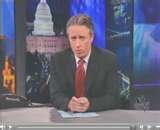Power Behind the Throne
While we can have a few chuckles, mocking Dick Cheney's self- appointed position as his own fourth branch of government, (see Friday's post) there is a serious story to be told about the Veep's unprecedented power and influence.
And now, it seems, the mainstream press is finally starting to tell at least some of that story. Here is an excerpt from a piece (the first part of a four-part series) by Barton Gellman and Jo Becker, staff writers for the Washington Post.
"Cheney preferred, and Bush approved, a mandate that gave him access to "every table and every meeting," making his voice heard in "whatever area the vice president feels he wants to be active in," Bolten said.
Cheney has used that mandate with singular force of will. Other recent vice presidents have enjoyed a standing invitation to join the president at "policy time." But Cheney's interventions have also come in the president's absence, at Cabinet and sub-Cabinet levels where his predecessors were seldom seen. He found pressure points and changed the course of events by "reaching down," a phrase that recurs often in interviews with current and former aides.
Mary Matalin, who was counselor to the vice president until 2003 and remains an informal adviser, described Cheney's portfolio as "the iron issues" -- a list that, as she defined it, comprises most of the core concerns of every recent president. Cheney took on "the economic issues, the security issues . . . the energy issues" -- and the White House legislative agenda, Matalin said, because he became "the go-to guy on the Hill." Other close aides noted, as well, a major role for Cheney in nominations and appointments.
As constitutional understudy, with no direct authority in the executive branch, Cheney has often worked through surrogates. Many of them owed their jobs to him….
Cheney has used that mandate with singular force of will. Other recent vice presidents have enjoyed a standing invitation to join the president at "policy time." But Cheney's interventions have also come in the president's absence, at Cabinet and sub-Cabinet levels where his predecessors were seldom seen. He found pressure points and changed the course of events by "reaching down," a phrase that recurs often in interviews with current and former aides.
Mary Matalin, who was counselor to the vice president until 2003 and remains an informal adviser, described Cheney's portfolio as "the iron issues" -- a list that, as she defined it, comprises most of the core concerns of every recent president. Cheney took on "the economic issues, the security issues . . . the energy issues" -- and the White House legislative agenda, Matalin said, because he became "the go-to guy on the Hill." Other close aides noted, as well, a major role for Cheney in nominations and appointments.
As constitutional understudy, with no direct authority in the executive branch, Cheney has often worked through surrogates. Many of them owed their jobs to him….
Stealth is among Cheney's most effective tools. Man-size Mosler safes, used elsewhere in government for classified secrets, store the workaday business of the office of the vice president. Even talking points for reporters are sometimes stamped "Treated As: Top Secret/SCI." Experts in and out of government said Cheney's office appears to have invented that designation, which alludes to "sensitive compartmented information," the most closely guarded category of government secrets. By adding the words "treated as," they said, Cheney seeks to protect unclassified work as though its disclosure would cause "exceptionally grave damage to national security."
Across the board, the vice president's office goes to unusual lengths to avoid transparency. Cheney declines to disclose the names or even the size of his staff, generally releases no public calendar and ordered the Secret Service to destroy his visitor logs. His general counsel has asserted that "the vice presidency is a unique office that is neither a part of the executive branch nor a part of the legislative branch," and is therefore exempt from rules governing either. Cheney is refusing to observe an executive order on the handling of national security secrets, and he proposed to abolish a federal office that insisted on auditing his compliance." You can read the rest of this first installment here.
Across the board, the vice president's office goes to unusual lengths to avoid transparency. Cheney declines to disclose the names or even the size of his staff, generally releases no public calendar and ordered the Secret Service to destroy his visitor logs. His general counsel has asserted that "the vice presidency is a unique office that is neither a part of the executive branch nor a part of the legislative branch," and is therefore exempt from rules governing either. Cheney is refusing to observe an executive order on the handling of national security secrets, and he proposed to abolish a federal office that insisted on auditing his compliance." You can read the rest of this first installment here.














2 comments:
People in D.C. are genuinely afraid of this creepy veep. They're going to be hesitant to risk his wrath
What's he gonna do to them? Throw them in jail and toss away the key? Oh, wait a minute...
Post a Comment